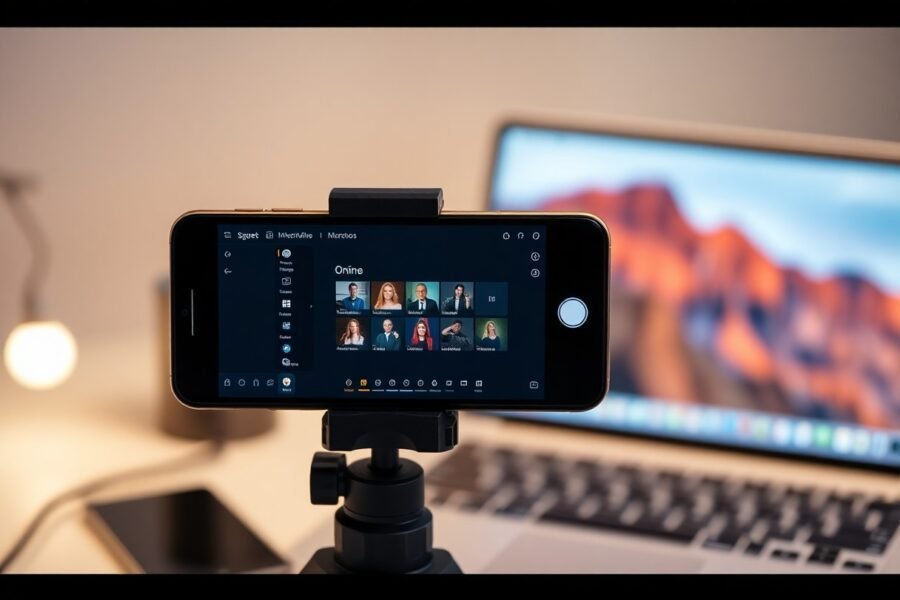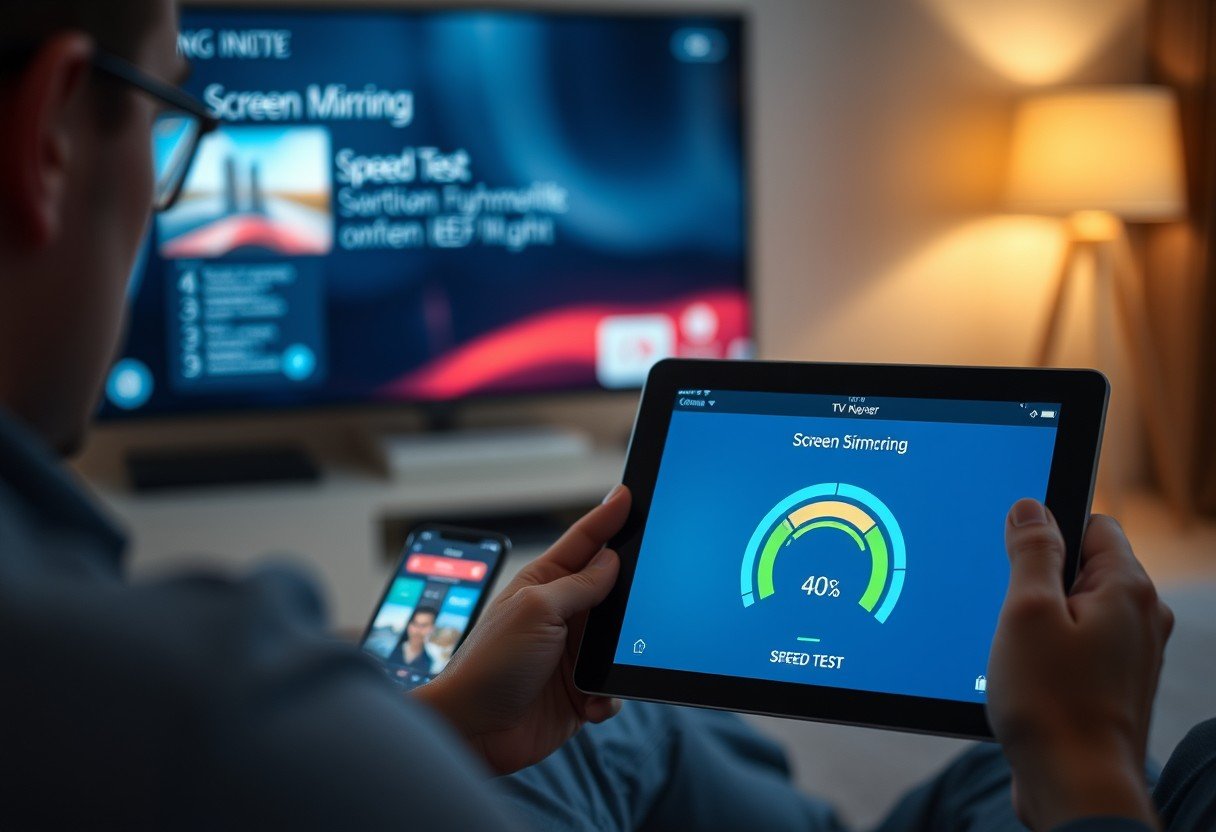The hiring process can be overwhelming for any business. HR departments often face hundreds of applications for a single open position, making it difficult to find the perfect candidate. HR hiring software helps solve this problem by automating and simplifying the recruitment process, allowing companies to find the right talent faster and more efficiently.
What is HR Hiring Software and How Does it Work?
HR hiring software is a digital tool designed to manage and streamline the entire recruitment cycle. Think of it as a central hub for all your hiring activities, from posting a job opening to making an offer.
These platforms work by automating repetitive tasks that usually consume a lot of time. Instead of manually sifting through emails and spreadsheets, the software organizes everything in one place.
Most of these tools include an Applicant Tracking System (ATS), which is the core engine that collects and sorts candidate information. This system helps you track every applicant’s journey through your hiring pipeline, ensuring no one gets lost in the shuffle.
Save Hundreds of Hours with Recruitment Automation
One of the biggest advantages of using hiring software is the massive amount of time it saves. Studies show that recruiters can spend up to 40% of their work week on manual tasks that could be automated. This software takes over the time-consuming parts of the job, freeing up your team to focus on what matters most: connecting with great candidates.
Imagine no longer having to play email tag to schedule an interview. Many platforms can automate this process entirely. The system syncs with your team’s calendars, shows available slots to candidates, and lets them book a time that works for everyone. It even sends out automatic reminders to reduce no-shows.
Another time-saving feature is the use of pre-recorded video interviews. Instead of conducting dozens of initial phone screenings, you can ask candidates to record their answers to a set of questions. This allows your hiring team to review responses on their own schedule, quickly identifying the most promising applicants.
Unify and Streamline Your Applicant Data
When applications come in from job boards, your company website, and social media, information can get scattered. HR hiring software acts as a single source of truth by pulling all applicant data into one organized system. This makes it incredibly easy for hiring managers to review and compare candidates without jumping between different platforms.
Many systems integrate directly with popular tools like Gmail, Outlook, and LinkedIn. This allows for seamless data collection, as the software can automatically parse information from resumes and online profiles to create a detailed candidate profile. This profile is a living document that gets updated in real-time as the candidate moves through the hiring process.
A centralized system makes it easy to manage key information for every applicant, including:
- Contact details and work history
- Resumes and cover letters
- Communication logs with your team
- Interview notes and feedback
This streamlined data helps ensure compliance and provides a clear record of your hiring efforts. It also builds a talent database you can tap into for future openings, saving you from starting your search from scratch every time.
Make Smarter Hiring Decisions with Better Insights
Good hiring decisions are based on data, not just gut feelings. HR hiring software provides the tools you need to evaluate candidates objectively and consistently. By creating customized assessments, you can test for specific skills required for the job, from coding challenges for developers to writing tests for marketers.
This allows you to see concrete proof of a candidate’s abilities before you even speak to them. The results are automatically logged in their profile, making it easy to compare scores and identify top performers. This data-driven approach helps reduce bias and increases the chances of making a quality hire.
The reporting features offered by these platforms also provide valuable insights into your overall recruitment process. You can generate reports and graphs that show you where your best candidates are coming from, how long it takes to fill a position, and other key performance indicators.
Here is a simple comparison of how evaluation differs with and without hiring software:
| Evaluation Method | Manual Process | With Hiring Software |
|---|---|---|
| Resume Screening | Subjective, time-consuming review | Automated keyword screening, consistent |
| Skills Assessment | Difficult to administer and track | Integrated, standardized tests with auto-scoring |
| Team Feedback | Scattered in emails and notes | Centralized scorecards and comments |
Boost Recruiter Productivity and Reach More Talent
When recruiters are not bogged down by administrative work, they can focus on high-impact activities. HR hiring software empowers them to be more productive by handling the repetitive parts of the job. This includes tasks like automatically creating candidate profiles, sending rejection emails, and tracking applicant statuses.
This newfound efficiency allows recruiters to cast a wider net. They can manage a larger volume of applicants without feeling overwhelmed, which means they can reach more qualified candidates who might have been overlooked otherwise.
Ultimately, this leads to a more strategic HR function. Your team can spend more time building relationships with top talent, improving the candidate experience, and working with hiring managers to define role requirements. They transform from administrators into strategic partners in the company’s growth.
How to Choose the Right Hiring Software for Your Business
With so many options available, selecting the right HR hiring software can seem daunting. The key is to find a solution that best fits your company’s unique needs. Start by evaluating your current hiring process and identifying the biggest pain points. Are you struggling with scheduling, data organization, or candidate communication?
Look for software that is user-friendly and easy for your team to adopt. A complicated system will only create more friction. Also, consider integrations. The best platforms connect seamlessly with the tools you already use, like your email, calendar, and company website.
Finally, consider scalability. Whether you are a small startup or a large enterprise, choose a platform that can grow with you. Many providers offer different pricing tiers, so you can start with the basics and add more features as your hiring needs evolve.
Frequently Asked Questions about HR Hiring Software
What is the main purpose of HR hiring software?
The primary purpose is to automate and centralize the recruitment process. It helps companies organize applicant information, save time on administrative tasks, and make more informed hiring decisions.
Can small businesses benefit from hiring software?
Absolutely. Many hiring software solutions are designed specifically for small businesses, offering affordable plans to help them compete for top talent. It levels the playing field by providing powerful tools that were once only available to large corporations.
What is an Applicant Tracking System (ATS)?
An Applicant Tracking System, or ATS, is a core feature of most hiring software. It is a database that collects, sorts, and tracks every candidate’s application and their progress through the hiring pipeline.
Does this software replace human recruiters?
No, it does not replace recruiters. Instead, it enhances their abilities by automating repetitive tasks, allowing them to focus on more strategic work like building relationships with candidates and partnering with hiring managers.
How does hiring software help improve the quality of hires?
It improves hire quality by providing data-driven tools like skills assessments and structured feedback forms. This helps reduce hiring bias and ensures you are evaluating candidates based on objective qualifications and performance.








Leave a Comment